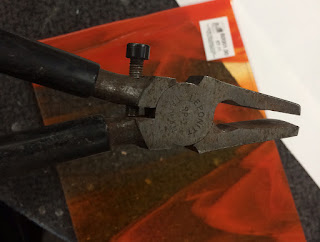Many kiln manufacturers install
schedules in the controllers of entry level kilns. Some install them in larger kilns too. They will work for for gaining basic experience of kiln operations.
However, these schedules are not universal. Each maker programmes schedules according to their understanding of a mid-range firing schedule for various processes.
However, these schedules are not universal. Each maker programmes schedules according to their understanding of a mid-range firing schedule for various processes.
This means that when referring to an installed programm on your controller, you need to give the full schedule so others can understand.
Why?
Not only because a tack fuse schedule
may be to a different temperature, but also a "fast" schedule as programmed into
one kiln might be quite different to one in another.
This matters, because how fast you
get to the top temperature affects what temperature you need to use. You will
probably experience the difference in final effect between a fast and a slow
fuse to the same temperature. If you
haven’t seen it yet, try both schedules on the same layup of glass.
You will see that a fast rate of
advance to a tack fuse will give a much more angular appearance, while a slow
rate of advance will give a much more rounded appearance. This is the effect of heat work, which is essentially the combination of temperature and time.
The longer it takes the glass to
reach a given temperature, the greater the heat work. Longer times to the top allow the use of
lower temperatures.
The consequence of accounting for
heat work is that a simple top temperature cannot be given. It is not just that kilns are different, but
that the amount of heat work put into the glass will change the top temperature
required for a given look.
Revisd1.1.25

























